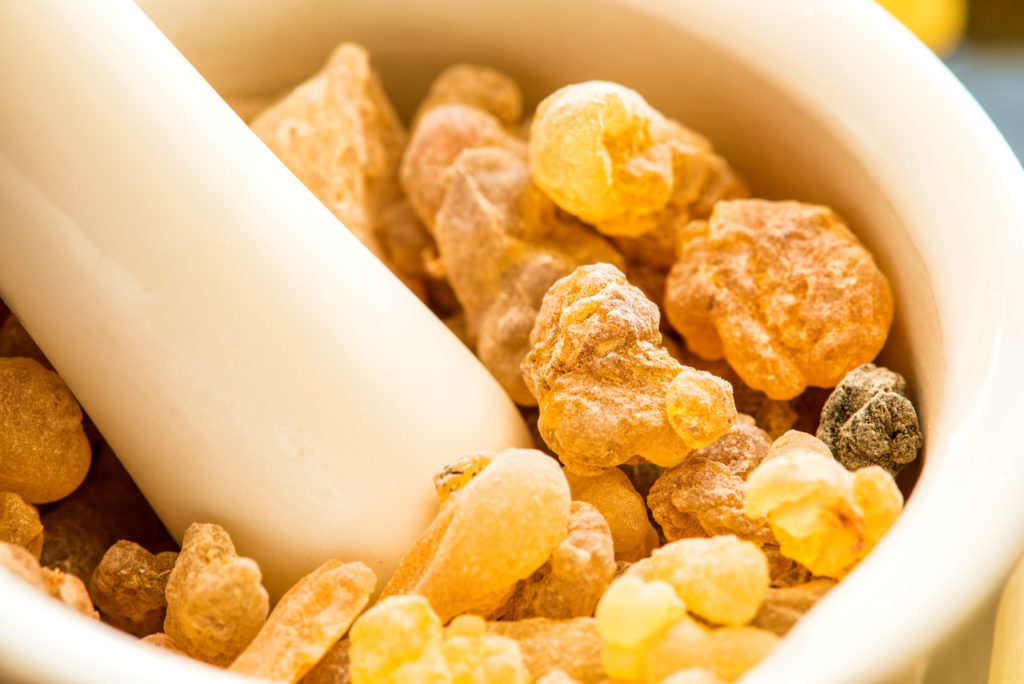What are the essential Roman Catholic incense ingredients used in Catholic parishes worldwide?
They are:
- Frankincense
- Myrrh
- Copal
Considered the first organized Church in history, the Catholic Church has close to 2000 years of traditions and customs that have been passed from one generation to the next and still exists today. Members of the clergy use different materials to conduct the Holy Mass, and one of the most common materials is Catholic incense.
Burning incense is one of the oldest practices in the Catholic Church, and in every parish, you step into, wherever you may be in the world, Roman Catholic incense is frequently burnt during Mass, especially on Sundays.
Going back in time, this practice is dated to antiquity, and it is used to purify the objects of worship.
The Church believes that the smoke from incense has spiritual purification properties and as the smoke rises to heaven, so does the prayer of the faithful.
The burning incense practice in the Catholic Church was not formulated out of thin air, though! It is based on Old Testament teachings and practices as recorded in the Bible.
The Church believes that the smoke from incense has spiritual purification properties and as the smoke rises to heaven, so does the prayer of the faithful.
Catholic Ingredients Incense: Its Use During Mass
Based on Canonical teachings, an officiant (the priest) may use burning incense at any point during the Holy Mass and as many times as he wishes. Church incense can be used:
- During the entrance
- Beginning of the Mass
- Processes and proclamation of the gospel
- Offertory
- Elevation of the sacred host
They can also use incense to Revere the Eucharist to show its importance to prayer life. The use of incense during worship is both a purification as well as a symbolic gesture.
Also, many people who are members of the Roman Catholic Church and non-members think of the Church when they think about incense and centers. Church is probably the first place most people see and smell incense.
Now, incense is commonly used in the home for its pleasant scent and interesting smoke patterns, incense has a long history and great meaning.
Essential Ingredients In Catholic Incense
All incense used in worship across different countries and cultures all have one thing in common; their base material is a plant. But different religions use different incense for different purposes.
The ones used by Buddhists will differ from the ones used by Hindus. The ones used by Taoists may differ from those used by The Roman Catholic Church. But there is often much overlap between ingredients.
Here are the ingredients found in Catholic incense.
1. Frankincense
- Natural Frankincense Incense
- Sourced directly from farmers
Last update on 2025-06-09 / Affiliate links / Images from Amazon Product Advertising API
Frankincense is one of the ingredients used during the Holy Catholic Mass, and it is steeped in Christian and Jewish traditions.
This incense is formed from the white frankincense resin which is obtained from balsam trees. The resin used during the Catholic Mass comes from two trees belonging to the Boswellia family.
They are the Boswellia Sacra and the Boswellia Papyrifera. Frankincense has been used for worship since the beginning of the early church thousands of years ago including in Paul Catholic Church.
Often Frankincense is burned in resin form in an electric resin burner.
2. Myrrh
- Natural Myrrh Incense
- Sourced directly from farmers
Last update on 2025-06-09 / Affiliate links / Images from Amazon Product Advertising API
Myrrh is another staple ingredient in Catholic incense. This ingredient also has biblical connotations, just like Frankincense. Both were part of the gifts offered by the three wise men of the East who came to see Jesus at his birth.
The Myrrh tree grows in the Arabian peninsula, and the incense is sourced from the Commiphora Myrrh tree. Although Myrrh and Frankincense are not as valuable as they once were, they still hold value, especially among Catholics.
3. Copal
- Pure incense without any fillers,...
- One pound of white Copal Tree Sap Gum.
- Origin: Indonesia
- 1 lb Bulk Bag
- Govinda Brand
Last update on 2025-06-09 / Affiliate links / Images from Amazon Product Advertising API
The third ingredient used by the Church is Copal. This wasn’t the case in early times for religious rites, but due to the rising cost of Frankincense, many parishes have replaced it with Copal since it is cheaper.
The first recorded users of Copal were the indigenous people of South America who burned it during their social ceremonies like Palo Santo. Copal is also found in South East Asia, especially in Indonesia.
Since it holds no basis in Christianity, it is only used by parishes that can’t afford quality Frankincense. Some parishes also burn incense with a combination of different resins too.
Conclusion
These are the different ingredients used by the Catholic Church for conducting worship during the Holy Mass and Christian worship. Also, note that significant portions of incense may be burnt during special feasts and holidays.
There are different catholic ingredients in incense, as outlined in this article. These ingredients can be mixed or used singularly, but the purpose of use remains the same. In the Catholic church burning, incense symbolizes purification and is a symbolic gesture.








